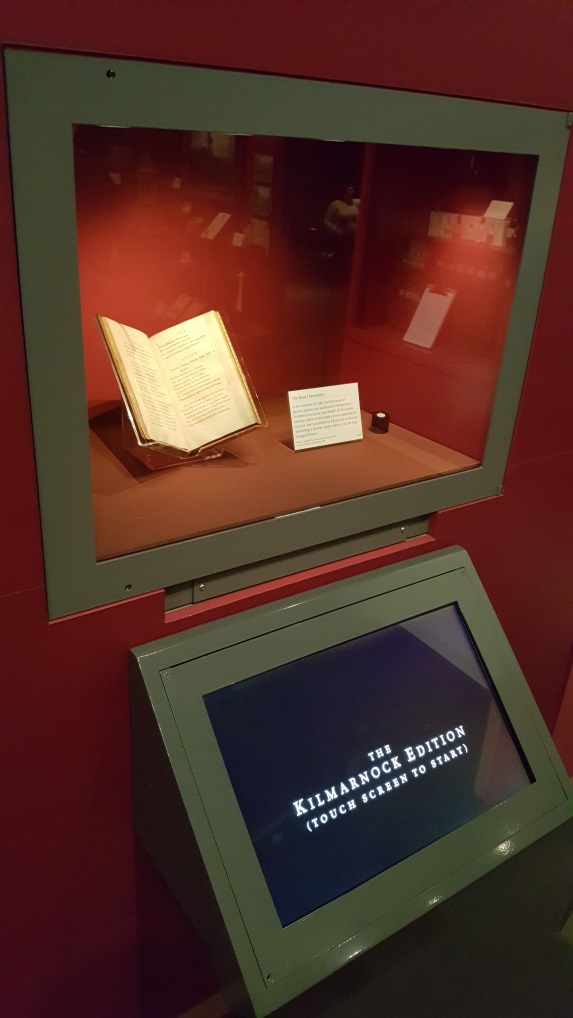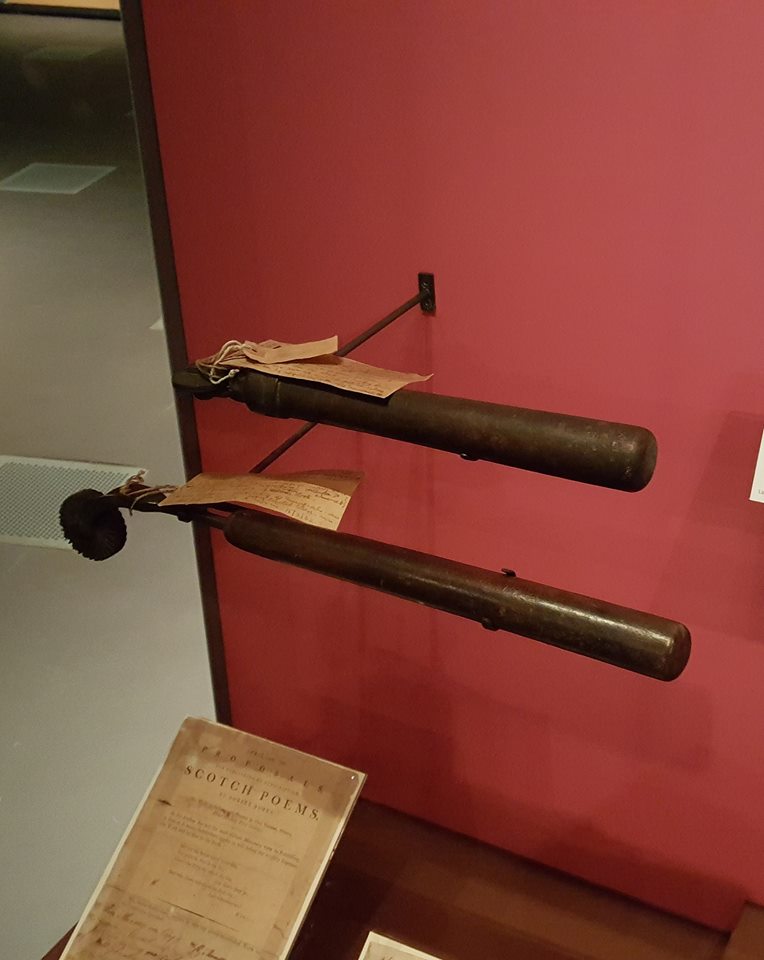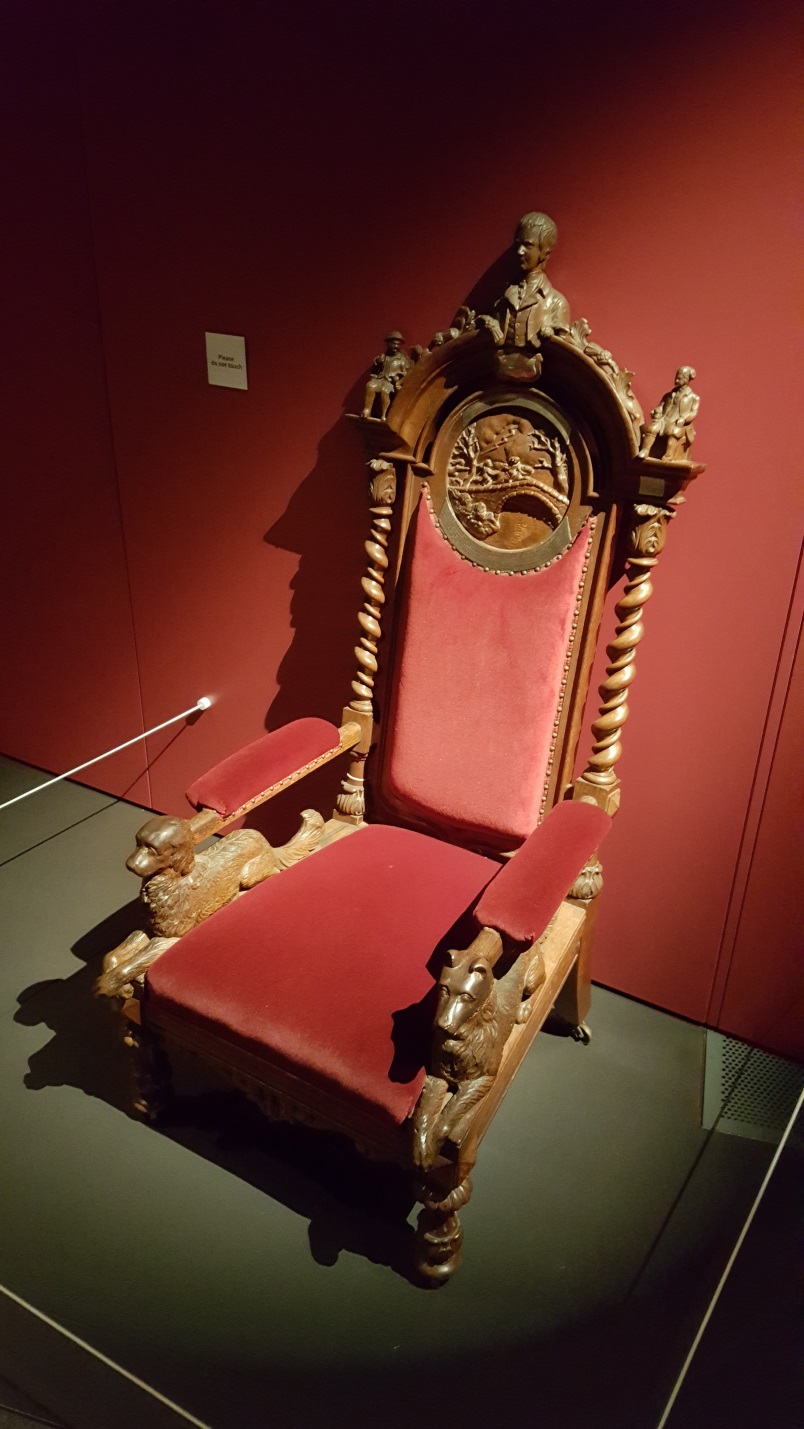music
Should Auld Acquaintance Be Forgot?
Sung at Hogmanay (Scots for New Years Eve) the world over, ‘Auld Lang Syne’ is arguably the most recognisable and the most performed of all Robert Burns’s songs, but how much do you actually know about this iconic song?
The song we are so familiar with is actually a reworking of earlier Scottish songs, and therefore exemplifies the process by which Burns collected and reworked pre-existing material. Burns read either one or both of Robert Aytoun’s (b.1570 but published in 1711 in volume 3 of Watson’s Choice Collection of Comic and Serious Scots Poems) and Allan Ramsay’s (published 1720) texts which have similar lines like “on old long syne” and “as they did lang syne”. These texts differ in theme; Aytoun’s is about lovers and then Ramsay’s is about love, war and comrades. Burns is inspired by these but he retains very little from earlier versions save the famous opening line ‘Should auld acquaintance be forgot’; he adapts the lyric to make it a more universal song, suitable to the late eighteenth-century, with a theme of friendship. Moreover, the tune with which we are familiar was not the only one available…
In Burns’s ‘Auld Lang Syne’, note the familiar ‘objects in nature’ he mentions like “braes” or hillsides covered in “gowans” or daisies/buttercups and “burns” or streams in which one might paddle. Burns was very inspired by nature and this is reflected in all his works including ‘Auld Lang Syne’!
Robert Burns sent his first draft of ‘Auld Lang Syne’ to a very important woman before it was even published! Frances Dunlop was a wealthy heiress almost thirty years older than Burns and they became friends because she contacted Burns after reading his ‘Kilmarnock Edition’ book of poetry. She enjoyed it so much, it roused her out of a long period of depression and she wrote to Burns for more copies, which resulted in a long friendship which lasted till Burns’s death. The Bard sought advice and guidance from Frances, who was a maternal figure in his life, and he clearly valued her opinion.

collection at Robert Burns Birthplace Museum, in Alloway, Scotland.
This handwritten copy of ‘Auld Lang Syne’ ISN’T an original by Robert Burns – although it has convinced some in the past…

Scotland’s collection at Robert Burns Birthplace Museum, in Alloway, Scotland.
It is in fact a forgery by the prolific Alexander Howland Smith – also known as ‘Antique Smith’. Smith was an Edinburgh law clerk who produced a large quantity of forgeries during the 1880s and early 1890s. He forged documents from a number of high profile figures, including Burns, Mary Queen of Scots, James VI, Oliver Cromwell, William Wordsworth, Walter Scott and many others! He was exposed in 1892, when an Edinburgh newspaper published one of his forgeries and an acquaintance recognised his handwriting. Smith was brought to trial in 1893 (not for forgery, but instead for selling forgeries) and was sentenced to 12 months imprisonment.
Did you know that in 2009 a special edition ‘Auld Lang Syne’ £2 coin was released? The special edition celebrated the 250th anniversary of Robert Burns’s birth (25 January 1759). Although not the rarest of the £2 coins, it’s not very common either. Next time you get your change, have a wee look for it!

Burns’s famous song has made it into popular culture too! Remember Harry declaring his love for Sally to the sound of Burns in When Harry Met Sally (1989)? Did you catch Bob’s serenade to a rat in Minions (2015)?
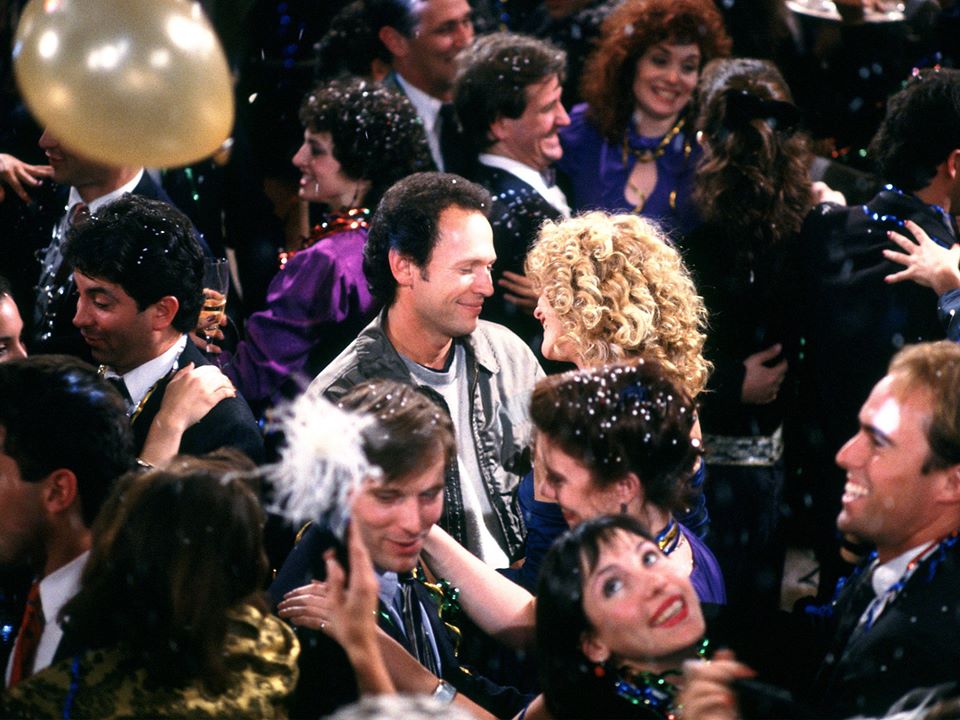
You can also hear the song in the Sex and the City Movie (2008), Elf (2003) – as well as in the classic films The Gold Rush (1925), Wee Willie Winkie (1937) and It’s a Wonderful Life (1946).
Most recently, did anyone notice in Netflix’s TV programme The Crown, season 3 (2019), episode 5 entitled “Coup”, a large group singing it to say farewell to Lord Mountbatten as he retired from a long-standing post?
Furthermore, countless recording artists have also covered the song throughout this time, including performers as diverse as Bing Crosby, Duke Ellington, Frank Sinatra and Dean Martin, B.B. King, The Beach Boys, Jimi Hendrix, John Travolta and Olivia Newton John, Rod Stewart, and Mariah Carey, to name only a few. Such widespread interest in the song has largely been driven by its association with the festive period.

Listen to a cover of the version here: https://www.youtube.com/watch?v=qqtkDU72yrg
It has connections with countries across globe – and not just countries historically where a lot of Scottish people emigrated. Two countries have used the tune most commonly associated with ‘Auld Lang Syne’ for their national anthem: the Maldives and, from 1901 until the middle of the last century, Korea. A version of the tune with new lyrics related to graduation, ‘Hotaru no Kikari’, has been sung in Japan since the late nineteenth century and is used also in some Japanese stores to signal closing-time.
The song is connected to war history as well! It was frequently played by regimental bands of the Union army in the time of the American Civil War during the 1860s. Apparently, with its associations of parting and absence from home, its tugging on the heartstrings was thought to be bad for morale and it was consequently banned. However, on accepting the surrender terms of the Confederacy in 1865, General Ulysses S. Grant of the victorious union side apparently ordered the tune to be played as a concession to his troops.
Again in the theatre of war, during the famous World War I Christmas truce of 1914, British and German soldiers joined together to sing the song (among several others). A poignant reminder of the power of the song; to imagine it drifting across ‘no man’s land’ is tragic indeed.
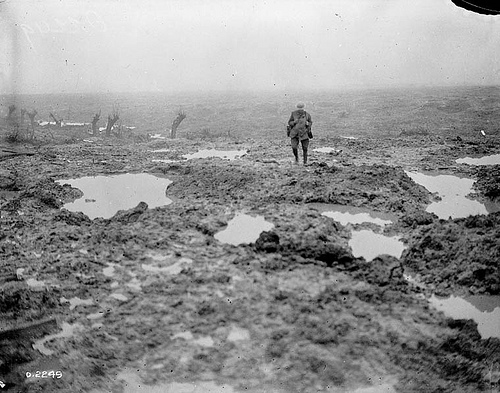
So, why is it so famous nowadays anyway? Well, Burns’s song was transmitted across the generations and is now claimed by communities far broader than expatriate Scots around the world, because a Canadian dance band, the Guy Lombardo Band, became a feature of New York’s 1st January celebrations from 1929 at the Roosevelt Hotel in the city. Over the next thirty years the band’s choice of ‘Auld Lang Syne’ as a signature part of their Hogmanay performance made the song a world-wide phenomenon, and a recording of the Lombardo version is still heard today in Times Square, New York, as the New Year is brought in.

Final fun fact to conclude: ‘Auld Lang Syne’ is the most frequently performed song after ‘Happy Birthday’. We hope you listen to, sing and join hands to one of Burns’s most precious gifts to the world this Hogmanay.
Bards, Burns an Blether in The Bachelors’

It’s owre twa hunner year syne The Bachelors’ Club in Tarbolton saw the young Robert Burns an his cronies speirin aboot the issues o thaur day. It is therefore a braw honour tae gie this historic biggin a heize ainst mair by bein involved in organisin and hostin monthly spoken word an music nichts in the place whaur Robert Burns fordered his poetic genius, charisma an flair fir debate.
The Bachelors’ Club nichts stairtit in March this year eftir Robert Burns Birthplace Museum volunteer Hugh Farrell envisaged the success of sic nichts in sic an inspirational setting.
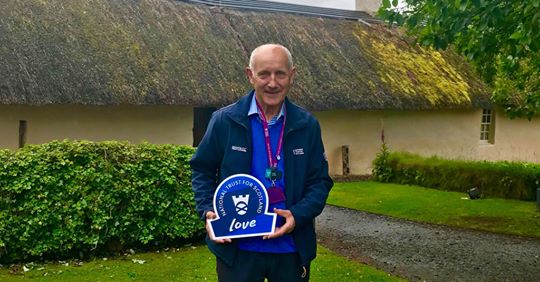
Tuesday the third o September saw the eighth session, an it wis wan we will aye hae mind o. Wullie Dick wis oor compère as folk favoured the company wi a turn.
Oor headliner wis Ciaran McGhee, singer, bard an musician. Ciaran bides an works in Embra an I first shook his haun some twa year syne at New Cumnock Burns Club’s annual Scots verse nicht. The company wis impressed then an agin at the annual “smoker” an at a forder Scots verse nicht. Ciaran traivelled doon tae Ayrshire tae play fir us, despite haen jist duin a 52 show marathon owre the duration o Embra festival.
Ciaran stertit wi a roarin rendition o “A Man’s a Man for a That”, an we hud a blether aboot hoo this song is as relevant noo, in these days o inequality an political carnage, as it wis twa hunner year syne, a fine example o Burns genius an insicht. Ciaran follaed wi Hamish Imlach’s birsie “Black is the Colour”, the raw emotion gien us aa goosebumps!! Ciaran also performed Johnny Cash’s cantie “Folsom Prison Blues”, an then Richard Thomson’s classic “Beeswing”, a version sae bonnie it left us hert-sair! Ciaran also performed tracks fae his album “Don’t give up the Day Job”.

The company wir then entertained by Burns recitals an poetry readins fae a wheen o bards an raconteurs. A big hertie chiel recited “The Holy Fair”, speirin wi the company on hoo excitin this maun hae buin in Burns day, amaist lik today’s “T in the Park”.
We hud “Tam the Bunnet” a hilarious parody o Tam o Shanter an Hugh Farrell telt us aboot the dochters ca’ad Elizabeth born tae Burns by different mithers, Burn’s first born bein “Dear bocht Bess”, her mither servant lass Bess Paton. Later oan cam Elizabeth Park, Anna Park’s dochter, reart by Jean Armour, an thaur wis wee Elizabeth Riddell, Robert an Jean’s youngest dochter wha deid aged jist 3 year auld. A “Farrell factoid” we learned wis that in Burns day, if a wee lassie wis born within mairrage, she was ca’ad fir her grandmither, if she wis born oot o wedlock she taen her mither’s first name. Hugh recited “A Poet’s Welcome To His Love-Begotten Daughter” fir us, the tender poem Burns scrievit, lamentin his love fir his first born wean, Elizabeth Paton.
We hud spoken word by various bards on sic diverse topics as a hen doo, a sardonic account o an ex girlfriend’s political tendencies, an a couthie poem inspired by a portrait o a mystery wummin sketched by the poets faither. In homage tae Burn’s “Poor Mailie’s Elegy”, we hud a lament in rhyme scrievit in the Scots leid, featurin the poet’s pet hen.
We learned o the poetess Janet Little, born in the same year as Burns, who selt owre fowre hunner copies o the book o her poetry she scrievit. This wummin wis kent as “The Scotch Milkmaid” an wis connected tae Burn’s freen an patron, Mrs Frances Anna Dunlop.

We also learned o hoo Burns wis spurned by Wilhelmina Alexander, “The Bonnie Lass of Ballochmyle” an hoo, eftir her daith, she wis foun tae hae kept a copy o the poem Burns scrievit fir her.
We hud mair hertie music fae Burness, performin Burns an Scottish songs sic as “Ye Jacobites by Name” an a contemporary version o “Auld Lang Syne” wi words added by Eddie Reader tae an auld Hebrew tune.
We hud “Caledonia” an “Ca the Yowes tae the Knowes” sung beautifully by a sonsie Auchinleck lass wha recently performed it at Lapraik festival in Muirkirk (oan Tibby’s Brig nae less!).
The newly appointed female president o Prestwick Burns Club entertained us on her ukelele wi the Burns song “The Gairdner wi his Paiddle” itherwise kent as “When Rosie May Comes in with Flowers”.
At the hinneren wi hud a sing alang tae Seamus Kennedy’s “The Little Fly” on the guitar an Ciaran feenished wi “Ae Fond Kiss”, interrupted by his mammy wha phoned tae see when he wis comin haim tae New Cumnock!
We hud sae muckle talent in The Bachelors’, that we didnae hae time fir a’body to dae a turn, so thaim that didnae will be first up neist time.

A hertie thanks tae a the crooners, bards an raconteurs an tae a’body in the audience fir gien up thaur time, sharin thaur talent an ken an gien sillar tae The Bachelors’ fund. Sae faur we hae roused £862 which hus been paid intae the account fir the keepin o The Bachelors’ Club.
Hugh Farrell is repeatin history by stertin a debatin group in The Bachelors’ on Monday 11th November, 239 year tae the day syne Burns launched it first time roon. Thaur will be a wee chainge tae the rules hooever, ye dinnae hae tae be a Bachelor an ye dinnae need tae be a man tae tak pairt!!
The Bachelors’ sessions are oan the 1st Tuesday o every month 7pm tae 10.30pm an a’body wi an enthusiasm for Burns is welcome.

Scrievit by Tracy Harvey, Resident Scots Scriever fir RBBM
We Get By With A Little Help From Our Friends
Friends of Robert Burns Birthplace Museum is a registered independent charity which was created in February 2013 to support the museum. Initially, the Friends group was set up in order to raise funds for the Burns Monument Restoration Appeal – this was a tremendous success, with the Friends donating £30,000 to the Burns Monument Fund in 2017, and a further £6000 donated in 2018. Since then, the Friends have continued to raise funds through a variety of means, and these are donated to the museum for use in other restoration and development projects.
The Friends fundraise in many different ways. Chief amongst them is the Garden Shop: in 2013, the Friends took over the old ticket kiosk in the Burns Monument Garden and set about converting it into a shop. Open during the summer season, the Garden Shop sells plants, bulbs and seeds, as well as Burns-related crafts, drinks and ice-creams to enjoy. Whilst the shop is closed throughout winter, the dedicated volunteers sell Christmas trees and wreaths during the festive season as well. Now in its seventh year, the Garden Shop is set to re-open in the very near future; it is opening later than usual due to work being done on the electronics within the shop.
A number of events also run throughout the year – for example, next month the Friends are putting on a Big Band Night at the museum, featuring the highly popular band That Swing Sensation. Further details can be found on the RBBM website. The Friends also hold an annual quiz night, as well as raffles and tombolas throughout the year.
Finally, it is thanks to the Friends of Robert Burns Birthplace Museum, and in particular the Chair, Hugh Farrell, that the Burns Supper returned to the Burns Cottage. The first ever Burns Supper was held in July 1801, when nine friends of the late Robert Burns gathered in his childhood home to dine, read his poetry and deliver an ode to the Bard before raising a glass in his name. The suppers continued to be held in the Cottage until 1809, before moving to the King’s Arms Hotel in Ayr in 1810. After a gap of two hundred and seven years, on 25th January 2016, a Burns Supper was once again held in Burns Cottage. This event has become the Friends’ major fundraiser.
The Supper has been a regular event every year since and attracts guests from all over the world. The traditional order of a Burns Supper is delivered, complete with piper, fiddler, poetry recitals, songs, and, of course, haggis, neeps and tatties. The names of the nine gentlemen who attended that first supper are listed on the programme, as are the names of all performers and guests at the current supper; a copy of the programme is then placed in the museum archives to become part of the history of the cottage. Attendees at the Burns Cottage Supper are also lucky enough to interact with an object from RBBM’s own collection (with the curator watching closely nearby!). And each year, the Gregg Fiddle that Robert Burns learned to dance to is played: a magical moment.
The Friends of Robert Burns Birthplace Museum are an integral part of RBBM, and the work they do to fundraise for our restoration and development projects is invaluable. We would like to thank them endlessly for the contributions they have made so far, and we look forward to many more years working successfully with them to ensure as many people as possible can enjoy the birthplace of the Bard.
More information on the Friends can be found on their Facebook page: https://www.facebook.com/friendsofrbbm/
A Love of Dancing
Poetry, songs and women are widely known to have been Robert Burns’s great passions, but he also loved to step onto the dancefloor as well. In 1779, Burns as a young man decided to attend dancing lessons in Tarbolton. This decision allowed him to temporarily escape the financial difficulties that the family were enduring at Lochlea. Therefore Burns used to regularly walk to a humble thatched house after the farming work was done to enjoy some time with his friends. In the museum collection you will see a beautifully restored fiddle with a red, green and black floral design work. This fiddle was played by Burns’s dance teacher, William Gregg, while Robert learned and practiced his steps. According to Burns he took up dancing to ‘give my manners a brush.’ But improving his manners and exercise were not the only benefits that dancing would give, as it granted Burns an opportunity to get acquainted with the local girls as well. This early time of social and sexual exploration played an important part in shaping Burns into the man he would famously become. To our twenty-first century minds dancing seems like a harmless pastime; but to his father William Burnes, this was an act of rebellion. According to Gilbert their father was often irritated by Robert’s dancing, as it was a clear sign that Robert was no longer listening to William’s advice and counsel. As a consequence of this, Burns himself acknowledged that his decision to continue with his dancing lessons compromised his relationship with his father.
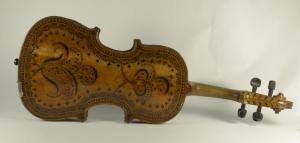
In Burns’s narrative poem Tam O’Shanter you can feel the excitement of the dance unfolding, yet all the while there is a dark truth to this particular social gathering:
Warlocks and witches in a dance:
Nae cotillion, brent new frae France,
But hornpipes, jigs, strathspeys, and reels,
Put life and mettle in their heels.’

This scene of enjoyment is not only watched by the protagonist Tam, but also by Auld Nick who played the music to make them dance. This negative perception of dance being sinful is more in keeping with William’s opinion rather than his son. Nevertheless this moral outlook is undermined by the poem’s greater sense of adventure and humour. These two opposing viewpoints mirror the different standpoints of William and Robert in 1779, one saw dance as wicked and the other saw only pleasure. Despite all of William’s disapproval Robert Burns continued to love music, dance and social gatherings throughout his life. Tam O’Shanter was published in Grose’s Antiquities of Scotland in 1791, which reveals that Burns never forgot his father’s outlook on dance.
If you are a lover of dance yourself, you can follow in the Bard’s footsteps and take part in Scottish country dances set to his songs. For instance Ae fond Kiss is a reel, or perhaps you would prefer a livelier jig to the poem Halloween. One of the most popular times to toast Burns and celebrate his life is at a Burns Supper, so perhaps in the future you will follow his example and take to the dancefloor.
‘The dancers quick and quicker flew,
They reel’d, they set, they cross’d, they cleekit.’
Tam O’Shanter
By Kirstie Bingham
Robert’s Guittar
For all music lovers especially those with a fascination for stringed instruments, Robert Burns’ guittar on display here at Robert Burns Birthplace Museum is well worth a look. This beautiful artefact is the earliest known English guittar in any Scottish collection, dating from 1757.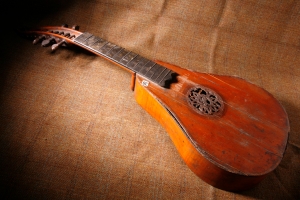
The English guittar was popular during the 18th century and up until the beginning of the 19th century. The instrument resembles a pear, in shape, and its’ head at the end of the neck is bent backwards slightly. It would usually have 12 strings although sometimes only 10 or 8 and those would be attached to little ivory knobs at the lower end of the instrument and stretched over a bridge. Fingerboards on guittars were often covered in ivory and would be complete with bass frets. Unfortunately there aren’t any strings remaining on Robert’s guittar today.
The English guittar is more closely related to the cittern (in fact it could be described as a revival of the cittern) than the modern-day guitar. In France the early form was known as the cistre or guittare allemande and in Italy it was known as the cetre. There is a theory that Italian musicians introduced the cittern to England where it became very fashionable and gradually became known as the guittar in the 18th century.
Although Robert spoke modestly of his musical ability, he clearly considered himself to be a musician. In a letter to Charles Sharpe, a talented amateur musician, Robert stated: “I am a Fiddler and a Poet […] Whenever I feel inclined to rest myself on my way, I take my seat under a hedge, laying my poetic wallet on my one side, and my fiddle case on the other.” It is not illogical then to imagine that he was an enthusiastic and perhaps accomplished fiddler, so I wonder if he would have played his guittar well too?
In 1758 in Edinburgh, Robert Bremner who published the first tutor for the 18th century Scottish guittar stated that; “…Time will…discover more Beauties, in the Instrument than there are yet known…” For anyone interested in listening to an 18th century guittar played today, there is the musician Rob MacKillop who plays Scottish traditional music written for guittar, lute, mandour and cittern. You can listen here to his rendition of I Love my Love in Secret, a melody which comes from a manuscript in Berwick, now housed in the National Library of Scotland.



